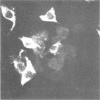Abstract
The purpose of this study was to determine whether sows shed rotavirus near the time of farrowing. Twelve sows purchased from a common source and seropositive for rotavirus were housed in isolation in farrowing crates from 5 days before to 3 weeks after farrowing. Fecal samples were collected at 3- to 4-day intervals and examined for the presence of rotavirus by direct electron microscopy. Samples were also treated with pancreatin and inoculated onto monkey kidney cells. Rotaviral antigens were detected by a direct immunofluorescence technique, and selected positive cultures were examined by immunoelectron microscopy. Rotavirus was detected in the feces of 5 of 12 sows as early as 5 days before to 2 weeks after farrowing. Diarrhea related to rotavirus developed in 4 of 12 litters. Two of these four litters were farrowed by sows which shed rotavirus at 7 and 10 and 14 days after farrowing. The results of this study indicate that sows immune to rotavirus can shed virus in their feces at a time when piglets are particularly susceptible to infection and that adult swine are of primary importance in the epidemiology of rotavirus as initiators of infection.
Full text
PDF
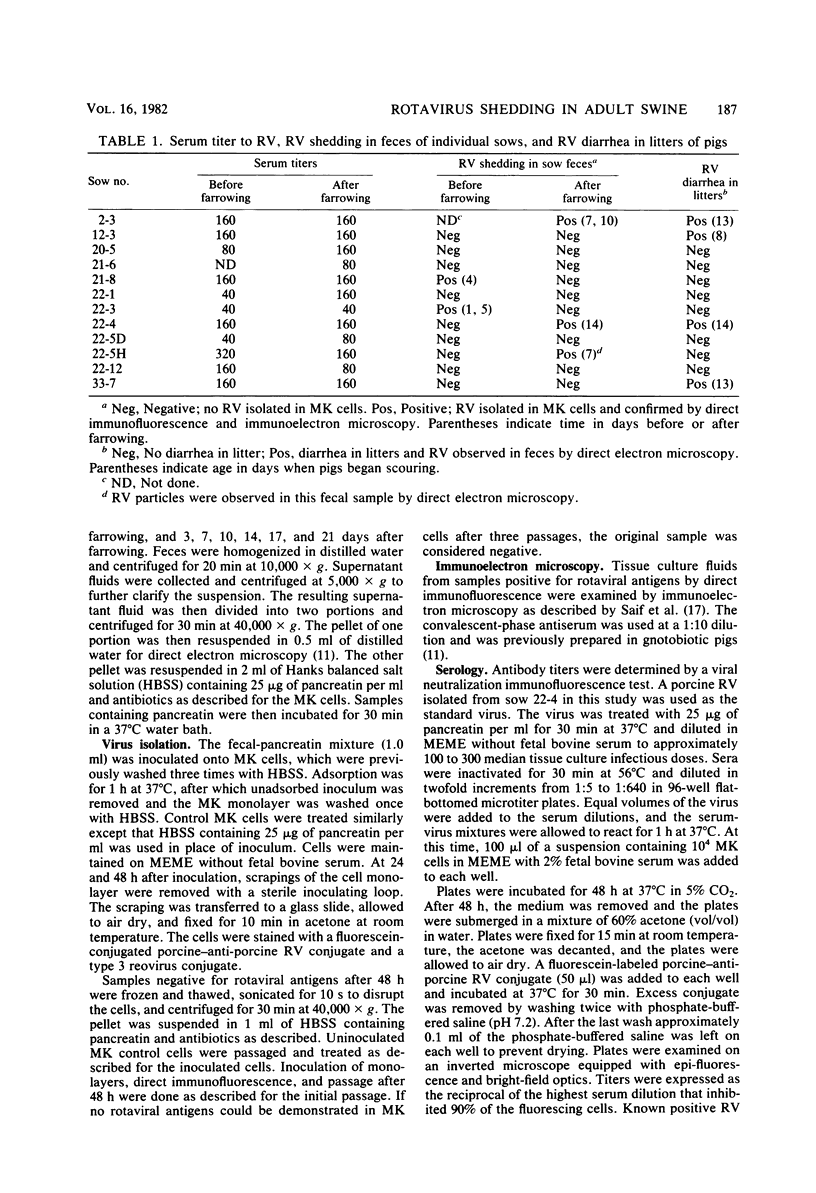
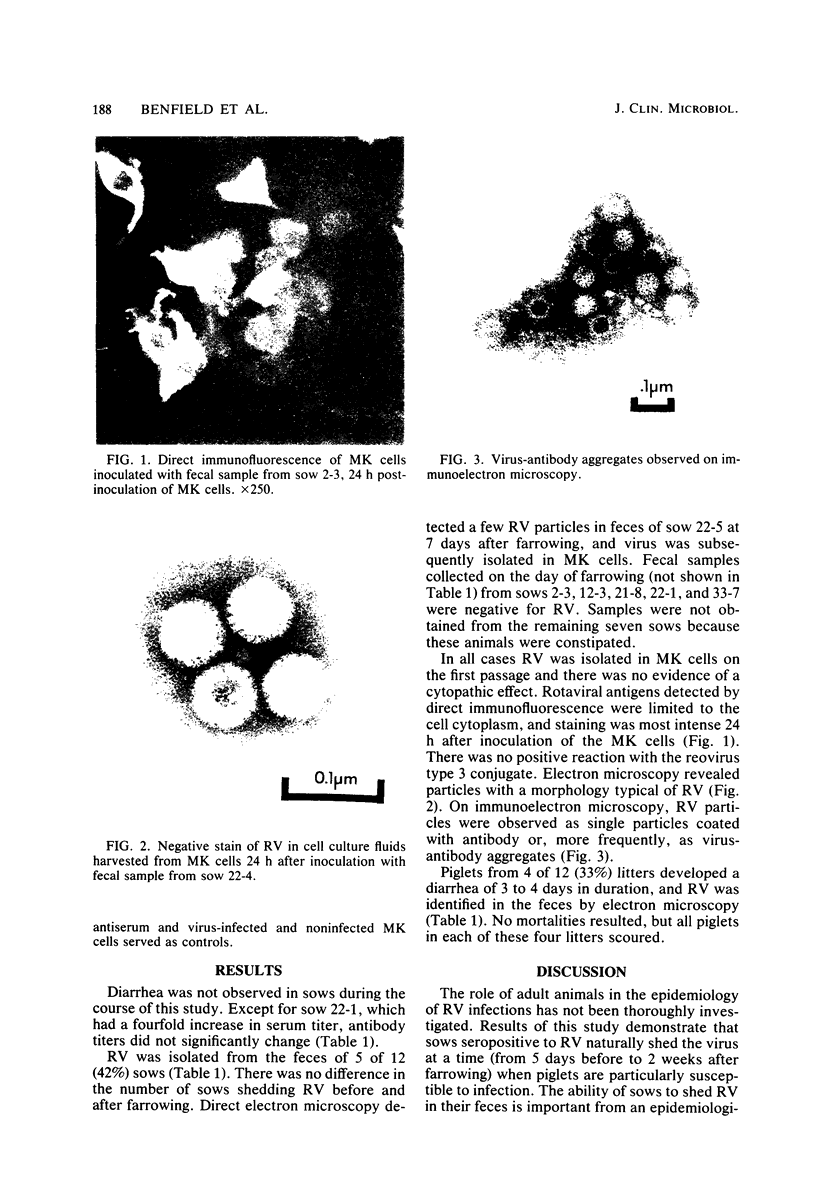
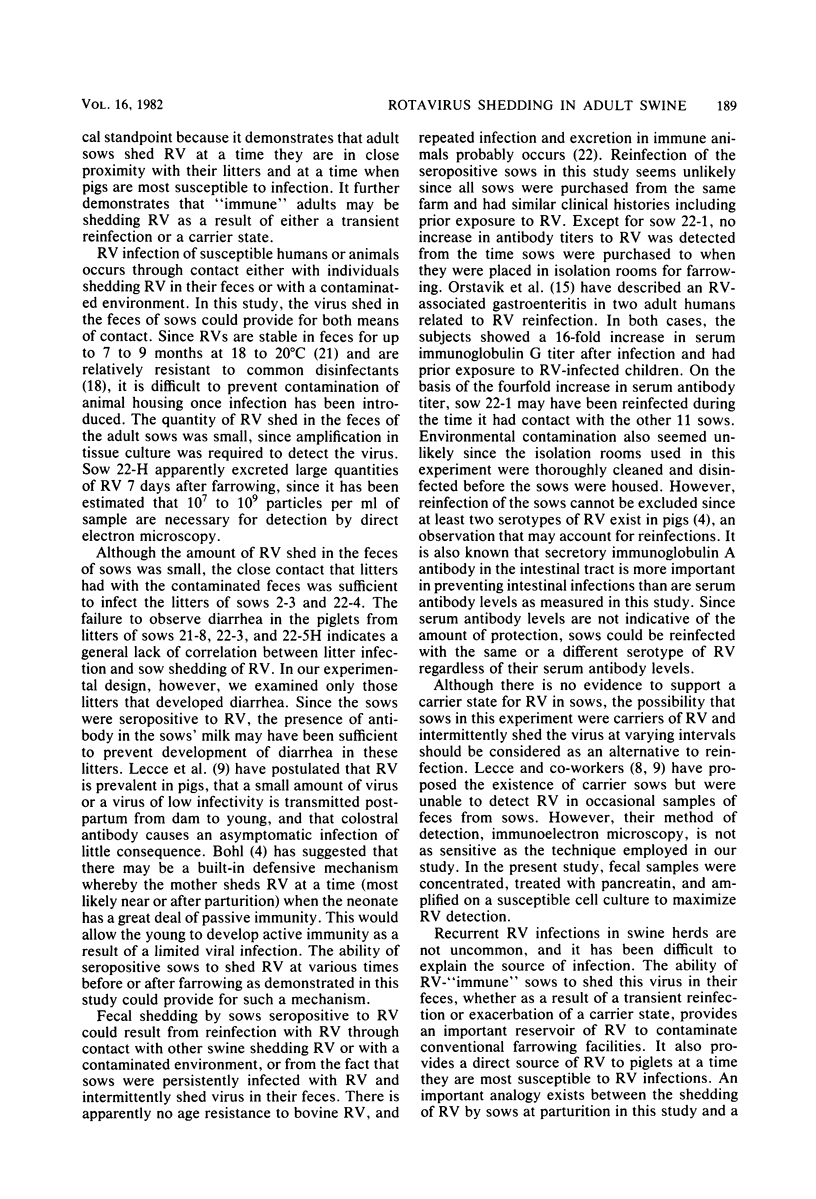
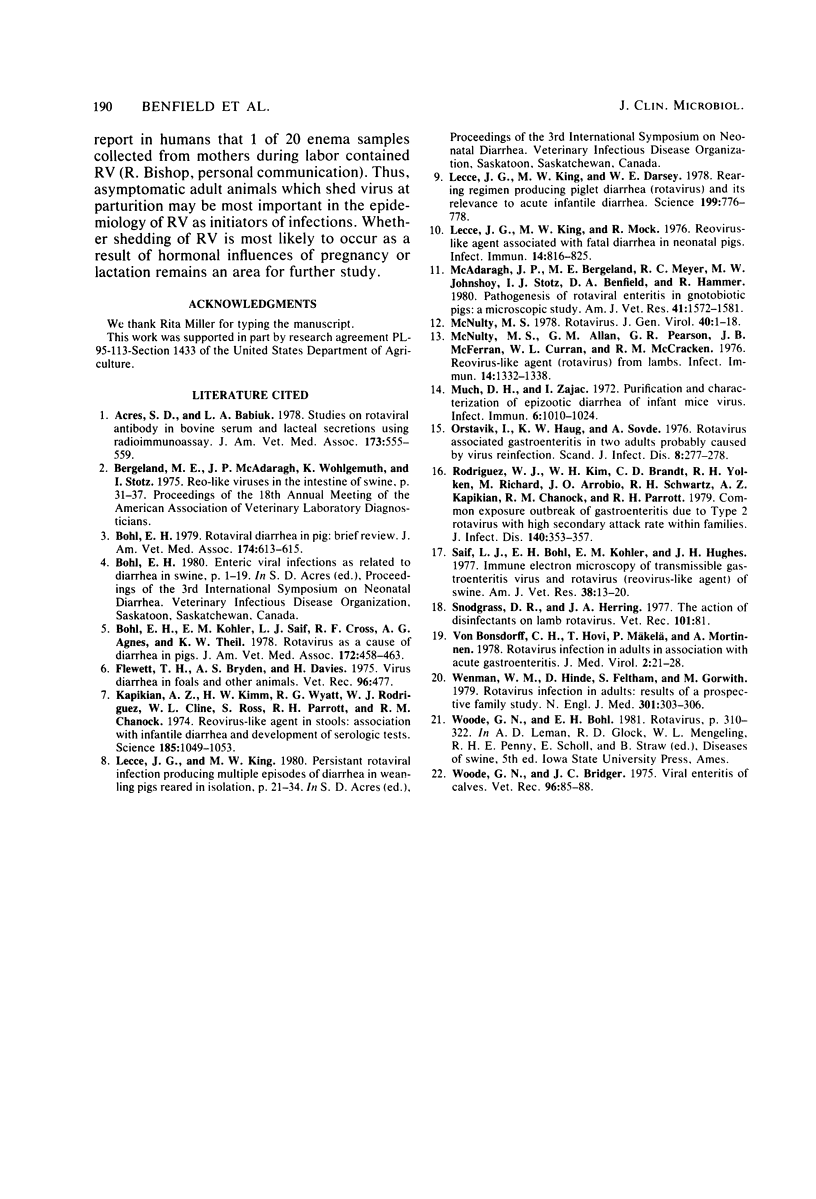
Images in this article
Selected References
These references are in PubMed. This may not be the complete list of references from this article.
- Acres S. D., Babiuk L. A. Studies on rotaviral antibody in bovine serum and lacteal secretions, using radioimmunoassay. J Am Vet Med Assoc. 1978 Sep 1;173(5 Pt 2):555–559. [PubMed] [Google Scholar]
- Bohl E. H., Kohler E. M., Saif L. J., Cross R. F., Agnes A. G., Theil K. W. Rotavirus as a cause of diarrhea in pigs. J Am Vet Med Assoc. 1978 Feb 15;172(4):458–463. [PubMed] [Google Scholar]
- Bohl E. H. Rotaviral diarrhea in pigs: brief review. J Am Vet Med Assoc. 1979 Mar 15;174(6):613–615. [PubMed] [Google Scholar]
- Kapikian A. Z., Kim H. W., Wyatt R. G., Rodriguez W. J., Ross S., Cline W. L., Parrott R. H., Chanock R. M. Reoviruslike agent in stools: association with infantile diarrhea and development of serologic tests. Science. 1974 Sep 20;185(4156):1049–1053. doi: 10.1126/science.185.4156.1049. [DOI] [PubMed] [Google Scholar]
- Lecce J. G., King M. W., Dorsey W. E. Rearing regimen producing piglet diarrhea (rotavirus) and its relevance to acute infantile diarrhea. Science. 1978 Feb 17;199(4330):776–778. doi: 10.1126/science.203032. [DOI] [PubMed] [Google Scholar]
- Lecce J. G., King M. W., Mock R. Reovirus-like agent associated with fatal diarrhea in neonatal pigs. Infect Immun. 1976 Sep;14(3):816–825. doi: 10.1128/iai.14.3.816-825.1976. [DOI] [PMC free article] [PubMed] [Google Scholar]
- McAdaragh J. P., Bergeland M. E., Meyer R. C., Johnshoy M. W., Stotz I. J., Benfield D. A., Hammer R. Pathogenesis of rotaviral enteritis in gnotobiotic pigs: a microscopic study. Am J Vet Res. 1980 Oct;41(10):1572–1581. [PubMed] [Google Scholar]
- McNulty M. S., Allan G. M., Pearson G. R., McFerran J. B., Curran W. L., McCracken R. M. Reovirus-like agent (rotavirus) from lambs. Infect Immun. 1976 Dec;14(6):1332–1338. doi: 10.1128/iai.14.6.1332-1338.1976. [DOI] [PMC free article] [PubMed] [Google Scholar]
- McNulty M. S. Rotaviruses. J Gen Virol. 1978 Jul;40(1):1–18. doi: 10.1099/0022-1317-40-1-1. [DOI] [PubMed] [Google Scholar]
- Much D. H., Zajac I. Purification and characterization of epizootic diarrhea of infant mice virus. Infect Immun. 1972 Dec;6(6):1019–1024. doi: 10.1128/iai.6.6.1019-1024.1972. [DOI] [PMC free article] [PubMed] [Google Scholar]
- Orstavik I., Haug K. W., Sovde A. Rotavirus-associated gastroenteritis in two adults probably caused by virus reinfection. Scand J Infect Dis. 1976;8(4):277–278. doi: 10.3109/inf.1976.8.issue-4.12. [DOI] [PubMed] [Google Scholar]
- Rodriguez W. J., Kim H. W., Brandt C. D., Yolken R. H., Richard M., Arrobio J. O., Schwartz R. H., Kapikian A. Z., Chanock R. M., Parrott R. H. Common exposure outbreak of gastroenteritis due to type 2 rotavirus with high secondary attack rate within families. J Infect Dis. 1979 Sep;140(3):353–357. doi: 10.1093/infdis/140.3.353. [DOI] [PubMed] [Google Scholar]
- Saif L. J., Bohl E. H., Kohler E. M., Hughes J. H. Immune electron microscopy of transmissible gastroenteritis virus and rotavirus (reovirus-like agent) of swine. Am J Vet Res. 1977 Jan;38(1):13–20. [PubMed] [Google Scholar]
- Snodgrass D. R., Herring J. A. The action of disinfectants on lamb rotavirus. Vet Rec. 1977 Jul 23;101(4):81–81. doi: 10.1136/vr.101.4.81-a. [DOI] [PubMed] [Google Scholar]
- Wenman W. M., Hinde D., Feltham S., Gurwith M. Rotavirus infection in adults. Results of a prospective family study. N Engl J Med. 1979 Aug 9;301(6):303–306. doi: 10.1056/NEJM197908093010604. [DOI] [PubMed] [Google Scholar]
- Woode G. N., Bridger J. C. Viral enteritis of calves. Vet Rec. 1975 Jan 25;96(4):85–88. doi: 10.1136/vr.96.4.85. [DOI] [PubMed] [Google Scholar]
- von Bonsdorff C. H., Hovi T., Mäkelä P., Mörttinen A. Rotavirus infections in adults in association with acute gastroenteritis. J Med Virol. 1978;2(1):21–28. doi: 10.1002/jmv.1890020105. [DOI] [PubMed] [Google Scholar]



